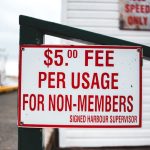Male Vandergrift
Signs You Need a Mobile RV Repair Service
Signs You Need a Mobile RV Repair Service 🚐
Traveling in an RV brings unparalleled freedom and adventure, letting you explore the open road with all the comforts of home. But just like your home, your RV can experience wear and tear. So, how do you know when it’s time to call in the experts? Here’s a handy guide to help you identify the signs you need a mobile RV repair service. Let’s ensure your journey remains smooth and stress-free!
Table of Contents
- Strange Noises or Smells 👂👃
- Persistent Leaks 💧
- Electrical Issues ⚡
- Plumbing Problems 🚿
- Tire and Wheel Concerns 🚜
- Conclusion
- FAQ
Strange Noises or Smells 👂👃
Have you noticed any unusual noises or strange smells coming from your RV? If so, this could be a clear indicator that something isn’t quite right. Rattling, clunking, or screeching sounds, especially when driving, may point to mechanical issues. Unpleasant odors can indicate problems with the engine, exhaust, or even the propane system. It’s time to get a professional to take a look and prevent any potential dangers.
Persistent Leaks 💧
Leaks are more than just annoying; they can lead to significant damage if not addressed promptly. Whether it’s water staining your ceiling, dripping from the roof, or pooling under your RV, leaks need immediate attention. A mobile RV repair service can efficiently find the source of the leak and fix it, preventing mold growth and structural damage.
Electrical Issues ⚡
Are your lights flickering or appliances not working properly? Electrical problems are not just inconvenient; they can be hazardous. Faulty wiring or a failing battery can leave you in the dark, literally. If you’re experiencing frequent electrical issues, it’s best to call in an expert who can diagnose and fix the problem safely.
Plumbing Problems 🚿
No one wants to deal with plumbing problems, especially on the road. If your RV’s plumbing is acting up—be it a clogged toilet, a backed-up sink, or a shower that refuses to drain—it’s time for professional intervention. A mobile RV repair service can handle these issues swiftly, ensuring your water systems function smoothly.
Tire and Wheel Concerns 🚜
Your RV’s tires are its foundation. If you notice uneven wear, frequent flats, or any vibrations while driving, it’s essential to address these issues immediately. Proper tire maintenance is crucial for your safety and fuel efficiency. A mobile RV service can provide tire inspections, rotations, and replacements wherever you are.
Conclusion
Keeping your RV in top condition enhances your travel experience and ensures your safety on the road. If you encounter any of these issues, don’t wait for them to escalate. A mobile RV repair service can offer convenient solutions, getting you back to enjoying your adventure as soon as possible.
FAQ
1. How do I find a reliable mobile RV repair service?
Look for services with good reviews, certifications, and experience in RV repairs. Personal recommendations from fellow RV enthusiasts can also be invaluable.
2. Can mobile RV repair services handle all types of repairs?
Most mobile RV repair services are equipped to handle a wide range of repairs, from mechanical and electrical to plumbing and tire issues. It’s always best to check with the service about their specific offerings.
3. How often should I get my RV inspected?
Regular inspections are key to preventing issues. Aim for at least once a year, or more frequently if you’re a full-time RVer or notice any unusual signs.
4. What should I do if I experience an emergency breakdown?
Contact a mobile RV repair service immediately. They can often reach you quickly and provide on-the-spot assistance, minimizing downtime.
Travel safe and happy adventuring! 🌟
Essential Camper Repair Tools: What You Should Never Leave Without
Essential Camper Repair Tools: What You Should Never Leave Without
Embarking on a camping adventure is always exciting! 🌲 Whether you’re a seasoned camper or a newbie, being prepared is key. One aspect of preparation that often gets overlooked is having the right camper repair tools. In this guide, we’ll walk through the essential tools you should always have on hand to tackle any unexpected hitches on your journey. Let’s dive in!
Table of Contents
1. Introduction
2. The Basics: Tools Every Camper Needs
3. Electrical Tools: Keep the Power Flowing
4. Plumbing Tools: Tackle Leaks and Clogs
5. Safety Tools: Always Be Prepared
6. Conclusion
7. FAQ
The Basics: Tools Every Camper Needs 🔧
Before we delve into specialized tools, let’s cover the basics. These tools are non-negotiable and should always be part of your camping toolkit:
1. Multi-Tool: A multi-tool is a camper’s best friend. It packs multiple functions like a knife, screwdriver, and pliers into one handy device. You’ll find it useful for a plethora of situations, from simple repairs to meal prep.
2. Duct Tape: This versatile tape can temporarily fix almost anything, from sealing leaks to mending tears in your gear. Don’t underestimate the power of duct tape!
3. Adjustable Wrench: Essential for tightening bolts and nuts, an adjustable wrench is crucial for maintaining the structural integrity of your camper.
Electrical Tools: Keep the Power Flowing ⚡
Electrical issues can be frustrating, especially when you’re trying to enjoy the great outdoors. Here are some tools to keep your camper powered up:
1. Voltage Tester: This tool helps you identify electrical issues by checking the voltage in your camper’s circuits. It’s a safety must-have before you start any electrical work.
2. Wire Cutters and Strippers: Whether you’re fixing a broken wire or setting up new lights, these tools are necessary for any electrical repair job.
Plumbing Tools: Tackle Leaks and Clogs 🚰
Water issues can dampen any camping trip. Be prepared with these plumbing essentials:
1. Plumber’s Tape: Also known as Teflon tape, this is essential for preventing leaks at pipe joints. It’s a simple yet effective solution to common plumbing problems.
2. Hand Snake: A hand snake is perfect for clearing minor clogs in your camper’s drains. Compact and easy to use, it can save you from bigger plumbing headaches.
Safety Tools: Always Be Prepared 🛑
Your safety is paramount. Equip your camper with these tools to ensure you’re ready for any emergency:
1. First Aid Kit: Accidents happen, so having a well-stocked first aid kit is essential. Make sure it includes bandages, antiseptic wipes, and pain relievers.
2. Fire Extinguisher: A small, portable fire extinguisher can be a lifesaver in case of a fire. Ensure it’s easily accessible and everyone knows how to use it.
Conclusion
With the right tools, you can tackle most camper repairs with confidence. Whether you’re fixing a leak or troubleshooting electrical issues, being prepared will enhance your camping experience and ensure that nothing stands in the way of your adventure. Happy camping! 🏕️
FAQ
Q1: What are the most important tools for camper maintenance?
A1: The most important tools include a multi-tool, duct tape, an adjustable wrench, a voltage tester, and a first aid kit. These cover a wide range of potential issues.
Q2: How often should I check my camper’s equipment?
A2: It’s a good idea to check your camper’s equipment and tools before every trip. Regular maintenance can prevent bigger problems down the line.
Q3: Can I use regular household tools for camper repairs?
A3: While some household tools can be used, it’s advisable to have a dedicated set of tools for your camper to ensure you’re fully prepared for specific camping needs.
Q4: What should I do if I encounter a repair I can’t handle?
A4: If you come across a repair that’s beyond your skill level, it’s best to consult a professional. Safety and proper functionality are paramount.
Exploring America by RV: Best Routes for History Buffs
Exploring America by RV: Best Routes for History Buffs
There’s something uniquely exhilarating about hitting the open road in an RV, especially for those with a passion for history. The United States is a tapestry of historical sites, and traveling by RV allows you to weave through time, exploring the stories that have shaped the nation. Whether you’re a seasoned traveler or embarking on your first RV adventure, this guide will take you on a journey through the best historical routes in America. 🗺️
Table of Contents
1. Introduction
2. The Colonial America Route 🚐
3. The Civil War Trail 🏞️
4. The Lewis and Clark Expedition Route 🌄
5. The Route 66 History Tour 🛣️
6. Conclusion
7. FAQs
The Colonial America Route 🚐
Begin your journey on the East Coast, where the American story began. This route stretches from Jamestown, Virginia, the first permanent English settlement, to Boston, Massachusetts, the cradle of the American Revolution. Along the way, visit Colonial Williamsburg, a living-history museum, and Philadelphia, where the Declaration of Independence was signed.
Don’t miss: Boston’s Freedom Trail, a 2.5-mile, red-lined route that leads you to 16 historically significant sites. 🚶♂️
The Civil War Trail 🏞️
Venture into the heart of the United States to explore the Civil War Trail. This route winds through Virginia, Maryland, and Pennsylvania, offering a somber yet enlightening journey through the pivotal moments of the Civil War. Key stops include Gettysburg, where the most famous battle took place, and Appomattox Court House, where the war effectively ended.
Tip: Visit during spring or fall for pleasant weather and fewer crowds. 🌸🍂
The Lewis and Clark Expedition Route 🌄
For those intrigued by exploration, retrace the steps of Lewis and Clark. This route starts in St. Louis, Missouri, and follows the explorers’ path through the vast American West to the Pacific Ocean. Experience the stunning landscapes of the Great Plains, the Rocky Mountains, and the Columbia River.
Highlight: The Gateway Arch in St. Louis, symbolizing the westward expansion. 🌆
The Route 66 History Tour 🛣️
No historical road trip would be complete without a cruise down Route 66. Known as the “Main Street of America,” this iconic highway runs from Chicago to Santa Monica. Along the way, you’ll encounter vintage motels, classic diners, and quirky roadside attractions, all echoing the mid-20th century Americana.
Must-see: Cadillac Ranch in Texas, an art installation and automotive landmark. 🚗
Conclusion
Exploring America by RV offers an unparalleled way to delve into the nation’s rich history. Each route offers a unique glimpse into the past, allowing you to immerse yourself in the stories and events that have shaped the United States. So pack your bags, start your engines, and get ready for a historical adventure of a lifetime! 🚍
FAQs
Q: How long does it typically take to complete one of these historical RV routes?
A: The duration can vary depending on how many stops you make. Generally, each route could take anywhere from a week to several weeks if you want to explore deeply.
Q: Are there RV-friendly campsites near these historical sites?
A: Yes, most historical routes have RV-friendly campsites nearby. It’s a good idea to book in advance, especially during peak travel seasons.
Q: What should I pack for an RV trip focused on history exploration?
A: Besides the usual essentials, consider bringing historical guidebooks, a camera or smartphone for photos, and a journal to document your experiences.
Q: Is it better to travel these routes in a specific season?
A: Spring and fall are often ideal due to milder weather and fewer tourists. However, each season offers its own unique charm.
Q: Can I bring my pet along for the ride?
A: Most RV parks are pet-friendly, but it’s best to check each site’s policy. Ensure you have all necessary pet supplies and documentation.
Full-Time RV Living: Balancing Work, Travel, and Life
Full-Time RV Living: Balancing Work, Travel, and Life
Have you ever dreamt of packing up your life and hitting the open road? 🚐 Full-time RV living is a lifestyle that many are embracing, combining work, travel, and life in one adventurous package. This blog post will guide you through the essentials of balancing these three aspects while living in an RV.
Table of Contents
1. Introduction
2. Setting Up Your Mobile Office
3. Exploring the Road: Travel Tips
4. Maintaining a Balanced Lifestyle
5. Conclusion
6. FAQs
Introduction
Full-time RV living is not just a trend; it’s a way of life. More people are choosing to break free from the conventional 9-to-5 and explore what it means to work and live on their terms. Whether you’re a remote worker, a digital nomad, or someone seeking adventure, this lifestyle offers a unique blend of flexibility and freedom. But how do you balance work, travel, and everyday life in such a compact space? Let’s dive in!
Setting Up Your Mobile Office 🖥️
One of the first challenges you’ll face is creating a productive workspace in your RV. Here’s how you can set up an efficient mobile office:
1. Invest in Quality Equipment: Ensure you have reliable internet connectivity. Consider mobile hotspots or satellite internet for areas with weak signals.
2. Designate a Workspace: Whether it’s a foldable desk or a converted dining area, having a dedicated workspace helps maintain focus.
3. Prioritize Ergonomics: Comfort is key. Invest in a supportive chair and adjustable desk to prevent strain during long work hours.
Exploring the Road: Travel Tips 🌍
Traveling in an RV offers unparalleled opportunities to explore diverse landscapes and cultures. Here are some tips to make your journey smoother:
1. Plan Your Route: Use apps and websites to map out your route and find RV-friendly campgrounds.
2. Embrace Flexibility: Plans can change, and that’s okay. Be open to spontaneous detours and unexpected opportunities.
3. Stay Connected: Join RV communities on social media to get tips, share experiences, and make new friends along the way.
Maintaining a Balanced Lifestyle ⚖️
Living in an RV doesn’t mean you have to sacrifice your health and well-being. Here’s how to maintain balance:
1. Create a Routine: Establish a daily routine that includes time for work, exercise, and relaxation.
2. Mindful Eating: Stock your RV with healthy foods and plan your meals to avoid the temptation of unhealthy road snacks.
3. Stay Active: Explore the outdoors with hiking, biking, or even yoga sessions in scenic spots.
Conclusion
Full-time RV living is a rewarding experience that offers the chance to explore the world while maintaining a fulfilling career. By setting up a functional workspace, embracing the adventure of travel, and maintaining a balanced lifestyle, you can make the most of this unique way of living. So, pack your bags, start your engine, and embark on the journey of a lifetime! 🌟
FAQs
Q1: What is the best way to ensure strong internet connectivity while on the road?
A1: Investing in a reliable mobile hotspot and researching satellite internet options can help maintain strong connectivity, even in remote areas.
Q2: How do I find RV-friendly campgrounds?
A2: Use apps like Allstays or Campendium to locate campgrounds that accommodate RVs, offering detailed reviews and amenities.
Q3: What are the essentials for a mobile office in an RV?
A3: Besides a stable internet connection, essentials include a comfortable chair, a portable desk, and noise-canceling headphones to enhance focus.
Q4: How can I maintain a healthy lifestyle while living in an RV?
A4: Establishing a routine, planning healthy meals, and incorporating physical activities like hiking or biking into your travel schedule can help maintain a healthy lifestyle.
Q5: What is the best way to meet other RV travelers?
A5: Joining online RV communities and attending RV meetups or rallies are great ways to connect with fellow travelers and share experiences.
Luxury RV Rentals: Choosing the Right Model for Your Trip
Luxury RV Rentals: Choosing the Right Model for Your Trip
Embarking on an RV adventure is an exciting way to explore the open road with all the comforts of home. Whether you’re planning a cross-country road trip or a weekend getaway, choosing the right luxury RV model can make all the difference. Let’s dive into the essentials of selecting the perfect RV for your journey.
Table of Contents
1. Introduction to Luxury RV Rentals
2. Understanding Different RV Models
3. Key Features to Consider 🚐
4. Budgeting for Your Luxury RV Experience 💰
5. Conclusion: Ready, Set, RV!
6. FAQs
Introduction to Luxury RV Rentals
Luxury RV rentals offer a unique blend of adventure and comfort. Imagine waking up to a stunning sunrise in the mountains or falling asleep under a canopy of stars in the desert—all while enjoying the amenities of a high-end hotel. With various models available, it’s essential to find one that fits your travel style and needs.
Understanding Different RV Models
Before you hit the road, it’s crucial to understand the different types of RVs available. Here’s a quick breakdown:
Class A Motorhomes 🚌
These are the most spacious and luxurious, resembling a bus. Ideal for large families or those craving extra space, they come with full kitchens, bathrooms, and even washers and dryers!
Class B Campervans 🚐
Perfect for couples or solo travelers, these compact models offer agility and convenience without sacrificing comfort. They are easy to drive and park, making them great for city tours.
Class C RVs 🏕️
Offering a balance between size and luxury, Class C RVs are built on a truck chassis and feature a distinctive over-cab sleeping area. They provide ample space and are suitable for families.
Key Features to Consider 🚐
When choosing a luxury RV, consider these crucial features:
Space and Layout
Think about how many people will be traveling with you. Do you need multiple sleeping areas, or is a convertible sofa enough?
Amenities and Comfort
Look for high-quality kitchen appliances, a spacious bathroom, and entertainment options like TVs and sound systems.
Fuel Efficiency
While luxury often means comfort, it doesn’t have to mean poor fuel efficiency. Check the MPG ratings and opt for a model that balances luxury with economic fuel consumption.
Budgeting for Your Luxury RV Experience 💰
Luxury doesn’t come cheap, but it can be affordable with the right planning. Here are a few budgeting tips:
Rental Costs: Compare prices across different rental services and look for deals during off-peak seasons.
Fuel and Maintenance: Factor in fuel costs and any additional maintenance fees that might arise during your trip.
Insurance: Ensure you have comprehensive insurance coverage to protect against any unforeseen incidents on the road.
Conclusion: Ready, Set, RV!
Choosing the right luxury RV for your adventure is all about understanding your needs and desires. With the perfect model, your journey becomes a seamless blend of exploration and relaxation. So, pack your bags, map out your route, and get ready for an unforgettable road trip!
FAQs
Q: What is the most fuel-efficient luxury RV model?
A: Class B campervans are generally the most fuel-efficient due to their smaller size and lighter weight.
Q: Can I drive a Class A motorhome with a regular driver’s license?
A: In most cases, yes. However, it’s always best to check local regulations as they can vary by state or country.
Q: Are pets allowed in luxury RV rentals?
A: Many rental companies allow pets, but it’s essential to confirm their pet policy and any additional fees involved.
Q: How far in advance should I book a luxury RV rental?
A: It’s advisable to book at least 3-6 months in advance, especially if you’re planning to travel during peak holiday seasons.
Sanitizing Your RV Fresh Water Tank: Comprehensive Guide
Sanitizing Your RV Fresh Water Tank: A Comprehensive Guide 🚐💧
If you’re an RV enthusiast, you know that keeping your fresh water tank clean and sanitized is crucial. Not only does it ensure safe drinking water, but it also maintains the overall hygiene of your mobile home. In this guide, we’ll explore everything you need to know about sanitizing your RV fresh water tank, with tips, tricks, and a step-by-step procedure that will make the process hassle-free!
Table of Contents
1. Why Sanitize Your RV Fresh Water Tank?
2. Supplies Needed 🛠️
3. Step-by-Step Guide
4. Tips and Tricks for Maintaining a Clean Tank 🧼
5. Conclusion
6. FAQs
Why Sanitize Your RV Fresh Water Tank?
Regular sanitization of your RV fresh water tank is essential for several reasons. It prevents the buildup of bacteria, mold, and algae, which can lead to health issues. Moreover, it ensures that the water you and your family consume is free from unwanted contaminants. 🦠
Supplies Needed 🛠️
Before you start the sanitization process, gather all necessary supplies:
🔹 Unscented household bleach
🔹 A measuring cup
🔹 A funnel
🔹 Clean water hose
🔹 A large bucket
🔹 Rubber gloves
Step-by-Step Guide
Step 1: Drain the Tank
Start by completely draining your fresh water tank. This will remove any stagnant water and debris that may have accumulated over time.
Step 2: Prepare the Sanitizing Solution
Mix a solution of bleach and water. A standard measurement is 1/4 cup of bleach for every 15 gallons of water your tank holds. Use the funnel to carefully pour the solution into the tank.
Step 3: Fill the Tank with Water
Once the bleach solution is in, fill the rest of the tank with clean water. This will help distribute the bleach throughout the tank, ensuring a thorough clean.
Step 4: Let it Sit
Allow the bleach solution to sit in the tank for at least 4-6 hours. This will give it enough time to sanitize the tank effectively.
Step 5: Flush the Tank
After the waiting period, drain the tank once more and refill it with fresh water. Run the water through all faucets until the bleach smell is gone. You may need to repeat this step to ensure all bleach is flushed out.
Tips and Tricks for Maintaining a Clean Tank 🧼
🔸 Sanitize your tank at least every six months or more frequently if you use your RV often.
🔸 Use a water filter to ensure only clean water enters your tank.
🔸 Always drain the tank when storing your RV for extended periods to prevent stagnant water.
Conclusion
Sanitizing your RV fresh water tank is a straightforward process that plays a critical role in maintaining a healthy and safe environment in your RV. By following the steps outlined and implementing regular maintenance, you’ll enjoy fresh and clean water throughout your travels. 🌍
FAQs
How often should I sanitize my RV fresh water tank?
It’s recommended to sanitize your tank at least every six months, or more frequently if you use your RV regularly.
Can I use something other than bleach to sanitize my tank?
While bleach is the most common sanitizing agent, there are alternative products specifically designed for RV water tanks that you can use.
How do I know if the bleach is completely flushed out?
Run water through all the faucets until there is no bleach smell. You may need to refill and flush the tank a couple of times.
Is it okay to use scented bleach?
Always use unscented bleach for sanitizing your water tank to avoid unwanted chemicals and odors.
Best Water Hoses for RVing: Top Picks and Reviews
Best Water Hoses for RVing: Top Picks and Reviews 🚐💧
When hitting the open road in your RV, having the right water hose is crucial for a comfortable and safe journey. Whether you’re a seasoned RVer or a newbie, finding the best water hose can make all the difference. In this post, we’ll dive into the top picks and reviews for water hoses, ensuring your RVing experience is nothing short of fantastic.
Table of Contents
1. Introduction
2. Why Choosing the Right Water Hose Matters
3. Top Picks for RV Water Hoses
4. What to Consider When Buying a Water Hose
5. Conclusion
6. FAQ Section
Why Choosing the Right Water Hose Matters 💡
Choosing the right water hose for your RV isn’t just about convenience. The right hose ensures safe drinking water, prevents leaks, and withstands various weather conditions. A top-quality hose can save you from a lot of hassle and potential health concerns.
Top Picks for RV Water Hoses 🏆
Here’s a roundup of some of the best water hoses available for RV enthusiasts:
1. Camco Premium Drinking Water Hose
This hose is a fan favorite, known for its durability and reliability. Made with NSF-certified materials, it’s safe for drinking water and offers a kink-free experience.
2. Zero-G RV Marine Hose
Lightweight yet sturdy, the Zero-G hose is perfect for those who prioritize easy storage and handling. Its abrasion-resistant material makes it a long-lasting choice.
3. Teknor Apex NeverKink
As the name suggests, this hose is designed to avoid kinking, thanks to its reflex mesh technology. It’s ideal for RVers who often deal with tricky storage spaces.
4. Valterra AquaFresh High-Pressure Hose
For those needing a high-pressure option, the Valterra AquaFresh is a great pick. It’s designed to withstand high water pressure while maintaining a safe drinking water standard.
What to Consider When Buying a Water Hose 🤔
Before making a purchase, consider the following factors:
1. Length: Ensure the hose is long enough to reach your water source but not so long that it becomes a storage nightmare.
2. Material: Opt for hoses made of safe, non-toxic materials to ensure water safety. Look for NSF-certified products.
3. Durability: Consider weather-resistant and kink-free options to avoid frequent replacements.
4. Weight: A lightweight hose can be easier to handle and store, especially if space is limited in your RV.
Conclusion 🚀
Choosing the best water hose for RVing is a significant decision that can impact your overall experience on the road. By considering factors like material, durability, and length, you can ensure that your adventures are stress-free and enjoyable. Whether you choose the Camco Premium or the Valterra AquaFresh, you’ll be well on your way to a well-hydrated journey.
FAQ Section ❓
Q1: How often should I replace my RV water hose?
A1: Ideally, you should replace your RV water hose every couple of years or sooner if you notice any wear and tear.
Q2: Can I use a regular garden hose for my RV?
A2: It’s not recommended as garden hoses may not be safe for drinking water. Always opt for hoses specifically designed for RV use.
Q3: How do I prevent my RV water hose from freezing in winter?
A3: Use heated hoses or hose insulation to prevent freezing. It’s essential to protect your hose and water supply during colder months.
Q4: What is the standard length for an RV water hose?
A4: Most RV water hoses range from 25 to 50 feet. Choose the length based on your specific needs and storage capabilities.
Q5: Are all RV water hoses safe for drinking water?
A5: No, not all hoses are safe. Ensure that your chosen hose is labeled as safe for drinking water and is NSF certified.
Sanitizing Your RV’s Fresh Water Tank: Dos and Don’ts
Sanitizing Your RV’s Fresh Water Tank: Dos and Don’ts
There’s nothing quite like hitting the open road in your RV, with the freedom to explore and the comforts of home at your fingertips. But to keep that home-away-from-home fresh, you need to ensure your RV’s fresh water tank is clean and sanitized. In this blog post, we’ll walk you through the essential dos and don’ts of sanitizing your RV’s fresh water tank. Let’s dive in! 🚐💧
Table of Contents
- Why Sanitizing Your RV’s Fresh Water Tank is Important
- The Dos of Sanitizing Your RV’s Fresh Water Tank
- The Don’ts of Sanitizing Your RV’s Fresh Water Tank
- Conclusion
- FAQ
Why Sanitizing Your RV’s Fresh Water Tank is Important
Before we get into the how-tos, let’s talk about why sanitizing your RV’s fresh water tank is crucial. Over time, bacteria, algae, and other contaminants can build up in your tank, leading to unpleasant odors and potentially harmful water. Regular sanitization ensures that your water supply remains clean, safe, and ready to use for drinking, cooking, and washing. 🌿
The Dos of Sanitizing Your RV’s Fresh Water Tank
Ready to get started? Follow these dos to keep your water tank in top shape:
Do Use the Right Amount of Bleach
When sanitizing, use a quarter cup of bleach for every 15 gallons of water your tank can hold. This is a safe and effective concentration to kill bacteria without leaving a harmful residue.
Do Follow a Regular Schedule
Sanitize your tank at least once every six months, or more often if you use your RV frequently. A consistent schedule helps prevent buildup and keeps your water fresh.
Do Rinse Thoroughly
Once you’ve let the bleach solution sit (usually for about 8 hours), be sure to rinse the tank thoroughly. Fill it with clean water and flush it out a couple of times to ensure all traces of bleach are gone.
The Don’ts of Sanitizing Your RV’s Fresh Water Tank
Avoid these common pitfalls to make your sanitizing process smooth and effective:
Don’t Use Too Much Bleach
More is not better when it comes to bleach. Using too much can damage your tank and plumbing, and leave a lingering chemical taste in your water.
Don’t Forget to Drain the Tank Completely
Before you start sanitizing, make sure to drain all the old water out of the tank. This ensures the bleach solution can do its job effectively without dilution.
Don’t Skip the Ventilation
When working with bleach, ensure your RV is well-ventilated. Open windows and doors to let any fumes escape and keep the air fresh and breathable. 🌬️
Conclusion
Keeping your RV’s fresh water tank sanitized is vital for a safe and pleasant road-tripping experience. By following these dos and don’ts, you can ensure your water supply is clean and ready for your adventures. Remember, regular maintenance is key to a worry-free RV lifestyle. Happy travels! 🚙✨
FAQ
How often should I sanitize my RV’s fresh water tank?
It’s best to sanitize your tank at least every six months, or more frequently if you use your RV regularly.
Can I use something other than bleach to sanitize my tank?
While bleach is the most common and effective sanitizer, there are commercial RV tank sanitizers available. Always follow the manufacturer’s instructions.
What if my tank still smells after sanitizing?
If a bleach odor persists, rinse the tank with a mixture of water and baking soda, then flush again with clean water until the smell dissipates.
Is it safe to drink water from my RV tank?
Yes, as long as you’ve sanitized it properly and rinsed thoroughly, your water should be safe for consumption.
Got more questions or tips of your own? Drop them in the comments below! We’d love to hear from you. 😊
Calculating Propane Usage for Your RV Refrigerator: A Practical Guide
Calculating Propane Usage for Your RV Refrigerator: A Practical Guide
Welcome to your ultimate guide on understanding how much propane your RV refrigerator consumes. Whether you’re a seasoned RV traveler or a newbie hitting the road for the first time, knowing how to calculate propane usage can save you time, money, and ensure those cold beverages are always available. 🚐
Table of Contents
1. Introduction
2. How an RV Refrigerator Works
3. Calculating Propane Usage
4. Tips to Minimize Propane Consumption
5. Conclusion
6. FAQ
Introduction
Understanding propane consumption is crucial for managing resources on the road. In this guide, we’ll break down the essentials of calculating how much propane your RV refrigerator uses, helping you stay prepared and efficient. Let’s get started! 🌟
How an RV Refrigerator Works
Before diving into calculations, let’s unravel the basics of how your RV fridge operates. Unlike your typical home refrigerator, RV fridges often use absorption technology, which relies on a combination of propane and electricity. The propane heats a solution that causes cooling through a series of chemical reactions. Fascinating, right? 🔍
Calculating Propane Usage
Here’s the fun part—calculating your propane usage! On average, an RV refrigerator uses about 1.5 pounds of propane per day. But how do you figure out your specific usage?
Consider these steps:
1. **Know Your Fridge’s Specifications**: Check the manual for your refrigerator’s BTU rating. Typically, RV fridges range from 1,200 to 1,500 BTUs.
2. **Understand Propane Energy Content**: One gallon of propane contains about 91,500 BTUs.
3. **Do the Math**: Divide your fridge’s BTU rating by the propane’s BTU content per gallon. For example, a 1,500 BTU fridge would use roughly 0.016 gallons per hour.
By understanding these numbers, you can efficiently plan your propane usage. 📊
Tips to Minimize Propane Consumption
Want to stretch your propane further? Here are some practical tips:
– **Pre-Cool**: Chill your fridge at home before your trip.
– **Level Your RV**: Ensure your RV is level to maintain optimal fridge efficiency.
– **Keep It Closed**: Limit the frequency with which you open the fridge to retain cold air.
– **Regular Maintenance**: Clean the coils and vents to enhance performance.
Conclusion
Calculating and managing your RV refrigerator’s propane usage doesn’t have to be a daunting task. Equipped with the right knowledge and a few strategic tips, you’ll be well on your way to efficient and worry-free travels. So, pack your bags, grab your map, and hit the road with confidence! 🚀
FAQ
Q1: How often should I check my propane levels?
A: It’s a good practice to check your propane levels before each trip. Regular monitoring ensures you’re never caught off guard.
Q2: Can I run my RV refrigerator on electricity instead of propane?
A: Yes, many RV refrigerators can run on electricity when hooked up to a power source, which can save on propane usage.
Q3: What should I do if my fridge isn’t cooling properly?
A: First, check if your RV is level and ensure the fridge vents are clean. If problems persist, consult a professional for a thorough inspection.
Q4: Is it safe to travel with the fridge running on propane?
A: While many RVers do travel with propane appliances running, it’s important to follow safety guidelines and understand the risks involved.
Got more questions? Drop them in the comments, and happy camping! 🌄
RV Sewer Connections: Troubleshooting Guide
RV Sewer Connections: Troubleshooting Guide
Welcome to your ultimate guide on troubleshooting RV sewer connections! 🚐 Whether you’re a seasoned RVer or a newbie hitting the road for the first time, dealing with sewer connections can be a bit daunting. But fear not! This guide is here to help you navigate common issues and ensure smooth sailing (or driving) on your adventures.
Table of Contents
1. Introduction
2. Common Issues with RV Sewer Connections
3. Troubleshooting Tips
4. Maintenance Tips
5. Conclusion
6. FAQs
Introduction
The freedom of the open road, the beauty of nature, and the comfort of having your home on wheels – RVing offers all of these joys. However, one of the less glamorous but crucial aspects of RV life is managing your sewer connections. 🏞️ Let’s dive in and tackle some common problems and solutions so you can spend more time enjoying the journey!
Common Issues with RV Sewer Connections
Understanding common problems can help you prevent them or address them quickly:
1. Leaks 💧
Leaks can occur due to worn-out seals or loose connections. They can be messy and unpleasant, but they are often easy to fix with the right tools.
2. Clogs 🚿
Clogs are usually caused by improper waste breakdown or foreign objects in the system. They can create backups and unpleasant odors.
3. Odors 😷
Persistent bad smells can often indicate a venting issue or a buildup of waste. Proper ventilation and cleaning are key to resolving these issues.
Troubleshooting Tips
Here are some practical steps to troubleshoot and resolve common issues:
Check for Tight Connections 🔧
Ensure all connections are secure and that seals are intact. Hand-tighten connections, but use a wrench for stubborn fittings.
Use the Right Chemicals 🧪
Only use RV-specific chemicals to break down waste and prevent clogs. Avoid household cleaners as they can damage your system.
Flush and Clean Regularly 🚿
Regularly flushing your tanks with clean water helps prevent buildup. Consider using a tank cleaner for a thorough cleanse.
Maintenance Tips
Routine maintenance can go a long way in preventing issues:
Inspect Seals and Hoses 🔍
Regularly check the condition of seals and hoses for wear and tear. Replace any damaged components promptly.
Ventilation Checks 🌬️
Ensure your RV’s ventilation is functioning properly to avoid bad odors. Clear any obstructions from vents regularly.
Seasonal Maintenance 🛠️
Before storing your RV for an extended period, conduct a complete system check and clean to prevent issues when you hit the road again.
Conclusion
Dealing with RV sewer connections might not be the most exciting part of RVing, but it’s essential for a hassle-free experience. By understanding common issues and implementing these troubleshooting and maintenance tips, you’ll be well-equipped to handle any challenges that come your way. Happy travels! 🌟
FAQs
1. How often should I clean my RV sewer system?
It’s recommended to clean your RV sewer system every three to four uses. Regular cleaning helps prevent clogs and odors.
2. What chemicals should I avoid using in my RV sewer system?
Avoid using household cleaners, bleach, or any non-RV specific chemicals as they can damage your system. Stick to RV-safe products.
3. How can I prevent sewer clogs in my RV?
Use RV-specific chemicals to break down waste, flush your tanks regularly, and avoid putting foreign objects down the toilet or drains.
4. What should I do if I notice a leak in my sewer connection?
First, check all connections and seals for tightness or damage. Replace any faulty components and ensure everything is properly secured.
We hope this guide helps you manage your RV sewer connections with confidence! 🚍💨









